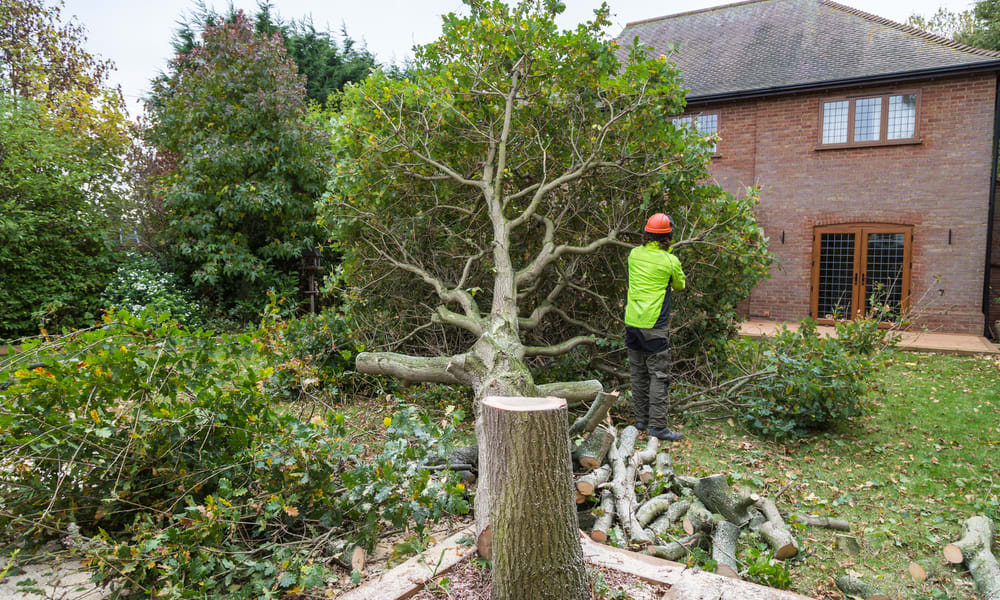Tree Removal Savings — Compare Quotes & Cut Costs
Homeowners often face substantial expenses when it comes to tree removal, driven by tree size, type, and location. However, there are opportunities for savings via seasonal discounts, obtaining comprehensive service quotes, and weighing DIY risks against professional safety assurances. Understanding key aspects effectively maximizes savings while ensuring property safety and aesthetics.

Maximizing Savings on Tree Removal Services
Several strategies can help reduce tree removal expenses without compromising safety or quality. Timing plays a crucial role in pricing, as many tree service companies offer lower rates during their off-season, typically late fall through early spring when demand decreases. Bundling multiple services such as tree removal, stump grinding, and debris cleanup often results in package discounts.
Consider the tree’s location and accessibility when planning removal. Trees near power lines, buildings, or in tight spaces require specialized techniques and equipment, increasing costs. If possible, clearing access paths and removing obstacles beforehand can reduce labor time and associated fees. Additionally, some companies offer discounts for cash payments or referrals to neighbors who also need tree services.
Comparing Tree Service Quotes Effectively
Obtaining multiple quotes is essential for understanding market rates and service variations in your area. Request detailed written estimates from at least three licensed and insured tree service providers. Each quote should specify the scope of work, including tree removal method, stump treatment, debris disposal, and cleanup requirements.
Pay attention to significant price variations between quotes, as extremely low bids may indicate inexperienced operators, inadequate insurance coverage, or hidden costs. Conversely, exceptionally high quotes might include unnecessary services or premium pricing. Verify that each company holds proper licensing, maintains current liability insurance, and employs certified arborists when specialized knowledge is required.
Understanding Tree Removal Cost Factors
Multiple variables influence tree removal pricing, making it important to understand how professionals calculate estimates. Tree size represents the primary cost factor, with height and trunk diameter directly affecting removal complexity and time requirements. Species characteristics also matter, as hardwood trees generally cost more to remove than softwood varieties due to density and cutting difficulty.
Location accessibility significantly impacts pricing structures. Trees in open areas with easy equipment access cost less than those requiring climbing techniques or specialized rigging systems. Additional factors include local permit requirements, disposal fees, and regional labor costs, which vary considerably across different markets and geographic areas.
| Service Provider | Average Cost Range | Key Services |
|---|---|---|
| Davey Tree Expert Company | $400-$2,000+ | Complete removal, stump grinding, debris removal |
| Bartlett Tree Experts | $350-$1,800+ | Professional removal, cleanup, permit assistance |
| Local Licensed Contractors | $300-$1,500+ | Basic removal, stump options, variable cleanup |
Prices, rates, or cost estimates mentioned in this article are based on the latest available information but may change over time. Independent research is advised before making financial decisions.
DIY Tree Removal and Safety Tips
While professional removal is recommended for most situations, small trees under 10 feet tall may be suitable for careful DIY removal by experienced homeowners. Essential safety equipment includes hard hats, safety glasses, work gloves, and steel-toed boots. Never attempt removing trees near power lines, structures, or in areas where falling debris could cause property damage or injury.
Proper planning involves assessing the tree’s natural lean, identifying potential hazards, and establishing clear escape routes. Use appropriate cutting techniques, starting with lower branches and working upward before making the final felling cuts. However, most homeowners lack the specialized equipment, training, and insurance coverage necessary for safe tree removal, making professional services the preferred option.
Learn More About Tree Removal Regulations
Local regulations often govern tree removal activities, particularly for mature trees or those in protected areas. Many municipalities require permits for removing trees above certain size thresholds or specific species designated for preservation. Contact your local building department or urban forestry office to understand applicable requirements before beginning any removal project.
Some areas mandate replacement plantings or fees for removing healthy trees, adding to overall project costs. Homeowners associations may also impose restrictions on tree removal activities. Research these requirements early in your planning process to avoid delays, fines, or legal complications that could significantly increase your total project expenses.
Tree removal represents a significant investment that requires careful planning and informed decision-making. By obtaining multiple quotes, understanding cost factors, and considering timing strategies, property owners can manage expenses while ensuring safe, professional service. Whether dealing with emergency situations or planned landscape changes, thorough research and proper preparation help maximize value while protecting both property and personal safety throughout the removal process.




